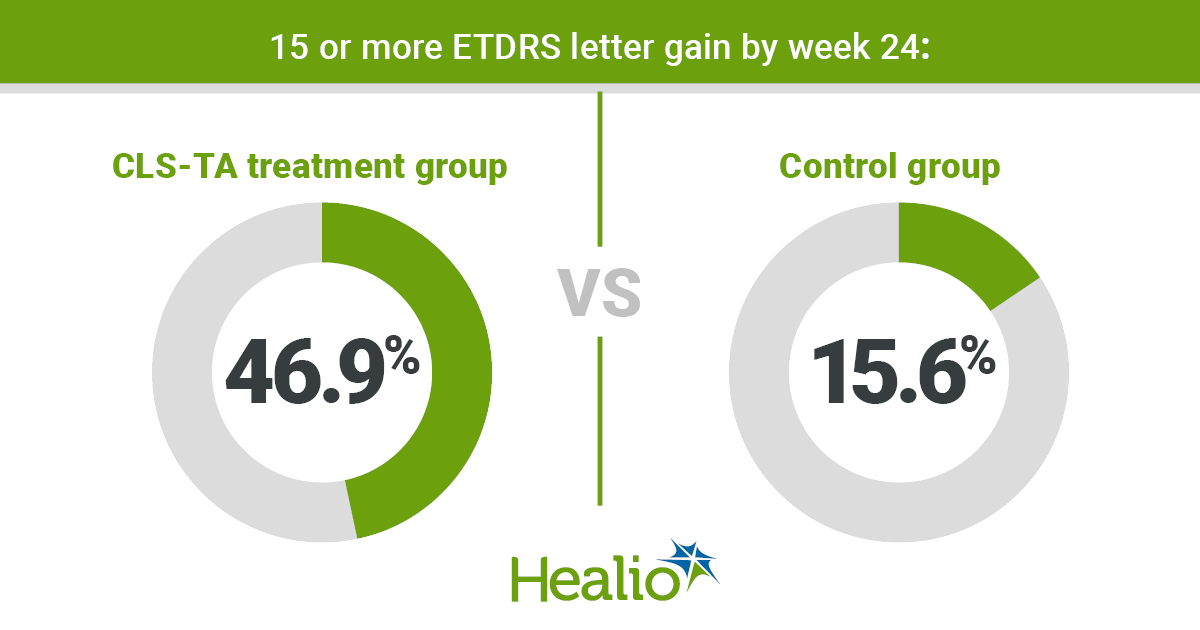Suprachoroidal triamcinolone acetonide improves vision in patients with macular edema
Patients with macular edema secondary to noninfectious uveitis who were treated with suprachoroidally injected triamcinolone acetonide gained significantly more vision when compared with a sham-treated cohort.
“This phase 3 randomized controlled trial demonstrated that suprachoroidally administered corticosteroid was effective in the reduction of macular edema in patients with noninfectious uveitis with nearly 50% of patients experiencing significant visual acuity gain. In addition, the safety results were favorable with a low rate of cataract and intraocular pressure response. These efficacy and safety signals are promising for suprachoroidal drug delivery for uveitis and potentially for other disease indications in the future,” study co-author Steven Yeh, MD, told Healio/OSN.
The masked trial included 160 patients with macular edema secondary to noninfectious uveitis randomly assigned 3:2 to suprachoroidally injected triamcinolone acetonide (CLS-TA) or sham treatment, with injections at day 0 and week 12. Researchers evaluated the primary endpoint of improvement of best corrected visual acuity from baseline of 15 or more ETDRS letters by week 24.

Ninety-six patients were in the CLS-TA treatment group and 64 patients in the control group; at the end of the study, there were 92 patients and 63 patients, respectively. Baseline mean BCVA was 55 ETDRS letters in the CLS-TA group and 54 ETDRS letters in the control group.
By week 4, the CLS-TA group experienced a mean increase of 9.6 ETDRS letters compared with 1.3 letters in the control group. The improvement was maintained through week 24, with CLS-TA treated patients experiencing a mean gain of 13.8 letters compared with 3 letters in the control group.
Researchers found 46.9% of patients in the CLS-TA group gained 15 or more letters compared with 15.6% of patients in the control group by week 24, a statistically significant difference (P < .001).
For the secondary endpoint of change in central subfield thickness, CLS-TA patients experienced a reduction of 153 µm compared with 18 µm in the control group by week 24, a statistically significant difference (P < .001). – by Robert Linnehan
Disclosures: Yeh reports he is a consultant for and receives financial support from Clearside Biomedical and Santen. Please see the study for all other authors’ relevant financial disclosures.
